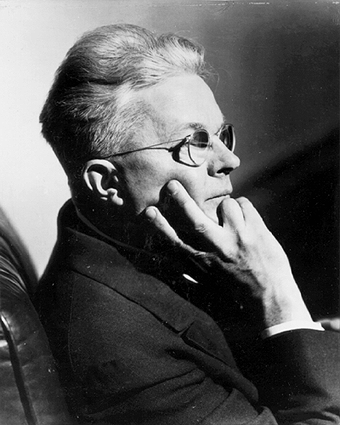Posts Tagged ‘Gordon Parks’
The Great American Influence: Roy Stryker
Roy Stryker may not be known for his camera work, but he is probably one of the most influential people in documentary photography.

Roy Stryker
Stryker, an economist by training, was the head of the Farm Security Administration’s Historical Section – a U.S. government department that was created during The New Deal. The FSA employed such noted documentary photographers as Dorothea Lange, Walker Evans, Gordon Parks and John Collier Jr. to name a few.
Born November 5, 1893 in Great Bend, Kansas, Stryker was the son of a farmer. He served in the infantry in World War I and when he returned home, he studied economics at Columbia University. He was asked to stay at the school once he graduated to teach economics with his mentor, Rexford Tugwell. The two collaborated on a book, “American Economic Life,” which used an extensive amount of photographs to highlight topics. Even in his lectures, Stryker used photographs from his collection to help bring a “real face” to the theories he was teaching.
Stryker followed his mentor to Washington D.C. as Tugwell was serving on President Franklin D. Roosevelt’s Brain Trust. Tugwell was appointed as the head of the FSA and made Stryker the head of the Historical Section – the section appointed to document the FSAs initiatives.
Stryker assembled one of the greatest teams of documentary photographers with a single task: document the effects of the Great Depression on the people in the hardest hit areas of the United States.
Although not a photographer himself, Stryker understood the importance of photography as a tool to both document and to influence. With his work with the FSA, Stryker was a singular figure in building one of the greatest collections of documentary images in U.S. history.
Photographers You Should Know: Gordon Parks
Information for this article came from Legends Online.
If anyone questions photography’s ability to shape opinions, views and to visually speak for the minority and oppressed, then that person has never viewed the images of Gordon Parks.

'American Gothic, 1942,' by Gordon Parks
Born November 30, 1912, in segregated Fort Scott, Kansas, Parks became fascinated with photography at the age of 25. He purchased his first camera at a pawnshop and quickly got a job photographing a catalog for a women’s department store. Soon, he moved to Chicago where he was a high society photographer and a portrait photographer.
He moved from job to job,all the while documenting the Chicago’s South Side black ghetto. In 1941, an exhibition of these photographs earned him a fellowship with the famed Farm Security Administration.
During the course of his first day at the FSA, he made what arguably could be considered his most recognized photograph: American Gothic, 1942. This image was made completely by chance. Parks was instructed by his FSA mentor and supervisor Roy Stryker – the same photo editor who worked with Dorothea Lange and Walker Evans – to get acquainted with the Washington D.C. Parks toured the city and found bigotry everywhere – some places made him enter through the backdoor while other businesses completely barred his entrance.
He returned to the FSA building and was told by Stryker to go interview older black residents to see how they dealt with the bigotry. That’s when he met Ella Watson. She mopped the floors at the FSA and she and Parks started a conversation where she explained the bigotry and hatred she felt while living in the nation’s capital. He then asked to take her picture, to which she agreed.
Two days later, Stryker saw the image and expressed concern that publishing the image would bring about political turmoil for the government-ran FSA. Yet, shortly thereafter, the photo appeared on the front page of The Washington Post. The image quickly symbolized the pre-civil rights era.
Parks’ philosophy on photography is elegantly stated in a quote from the legend himself. “Those people who want to use a camera should have something in mind, there’s something they want to show, something they want to say … I picked up a camera because it was my choice of weapons against what I hated most about the universe: racism, intolerance, poverty.”

Life magazine cover of a Parks photo essay on poverty. (Photo Credit: Gordon Parks"
After the FSA disbanded, Parks found work as a photographer for Vogue magazine. He later joined with Stryker again, working with him on the Standard Oil Photography Project.
Later, Parks joined the staff of Life magazine after editors there saw a documentary he executed on a young Harlem gang leader. For 20 years, he worked for Life magazine, photographing a variety of topics including Broadway productions, fashion, sports, segregation and portraits.
Parks was not only a tremendous photographer, he was also one of Hollywood’s first major black director. He directed the movie “Shaft” and “Shaft’s Big Score.” He also directed “The Super Cops” and “Leadbelly.”
Parks was also a poet and illustrated the books with his own photography. Furthermore, a self-taught piano player, he composed “Concerto for Piano and Orchestra” and “Tree Symphony.” He also regularly played piano in jazz ensembles.
Parks died March 7, 2006 at the age of 93 from cancer.